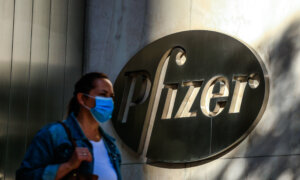A sweetener known as fructose may give cancer tumors a boost, and researchers advise that avoiding it may be one way people living with cancer can fight the disease.
A new study from Washington University (WashU) in St. Louis indicates that dietary fructose promotes tumor growth in animal models of melanoma, breast cancer, and cervical cancer.
The findings, published in Nature on Wednesday, reveal that while fructose does not directly fuel cancerous tumors, it does alter metabolism in ways that support cancer growth.
Researchers found that the liver converts fructose into usable nutrients for cancer cells, suggesting a potential new avenue for cancer treatment. “The idea that you can tackle cancer with diet is intriguing,” lead researcher Gary Patti, a professor at WashU, said in a press statement. “What you put in your body can be consumed by healthy tissue and then converted into something else that tumors use.”
Previous Research Linked HFCS With Colorectal Cancer Risk
The
study highlighted that high levels of fructose consumption increased the availability of circulating lipids in the blood, essential building blocks for cancer cell membranes.
“Our initial expectation was that tumor cells metabolize fructose just like glucose, directly utilizing its atoms to build new cellular components such as DNA. We were surprised that fructose was barely metabolized in the tumor types we tested,” study first author Ronald Fowle-Grider explained in the press release.
Patti noted that cancer cells have a strong affinity for glucose, but fructose is currently consumed in increasing amounts in the American diet, largely due to the food additive high-fructose corn syrup (HFCS) in processed foods. Table sugar contains about 50 percent fructose and 50 percent glucose, while HFCS contains up to 55 percent fructose.
In a previous animal study from 2021, HFCS was associated with an increased risk of colorectal cancer in mice prone to developing intestinal tumors and could increase the size and aggressiveness of colorectal tumors. That study also found that blocking the uptake of the sweetener by the body’s cells could prevent this growth.
HFCS has also been linked to other health risks, including the following:
- Liver Disease: HFCS can increase the risk of nonalcoholic fatty liver disease (NAFLD), a condition where too much fat builds up in the liver.
- Diabetes: HFCS can decrease insulin sensitivity, a risk factor for Type 2 diabetes.
- Heart Disease: HFCS can increase risk factors for heart disease, and the combination of fructose and glucose in HFCS may be worse than fructose alone.
HFCS Is Most Common Fructose Used in Food Processing
In 2021, the United States
consumed 39.5 pounds of HFCS per person, down 1.2 percent from the previous year. However, this is a decline from the peak of 65.9 pounds per person in 1999.
“If you go through your pantry and look for the items that contain high-fructose corn syrup, which is the most common form of fructose, it is pretty astonishing,” Patti said, emphasizing the prevalence of HFCS in various food items beyond sweets.
As fructose consumption has increased over the decades, researchers have observed a corresponding rise in cancer rates among individuals under 50. Research into potential links between the two trends is underway. Though a causative link hasn’t been established, Patti cautioned that people who already have cancer should consider avoiding fructose due to its potentially pro-cancer effects.
“Sadly, that is easier said than done,” he stated in the press release.
The research may also lead to new therapeutic approaches targeting the metabolism of healthy cells to treat cancer rather than focusing solely on the disease cells themselves, according to the WashU researchers.
The study authors are collaborating with clinical partners at WashU Medicine to explore a clinical trial related to dietary fructose in cancer treatment.














